Name Rakuten Kitazawa Role Artist | Died August 25, 1955 | |
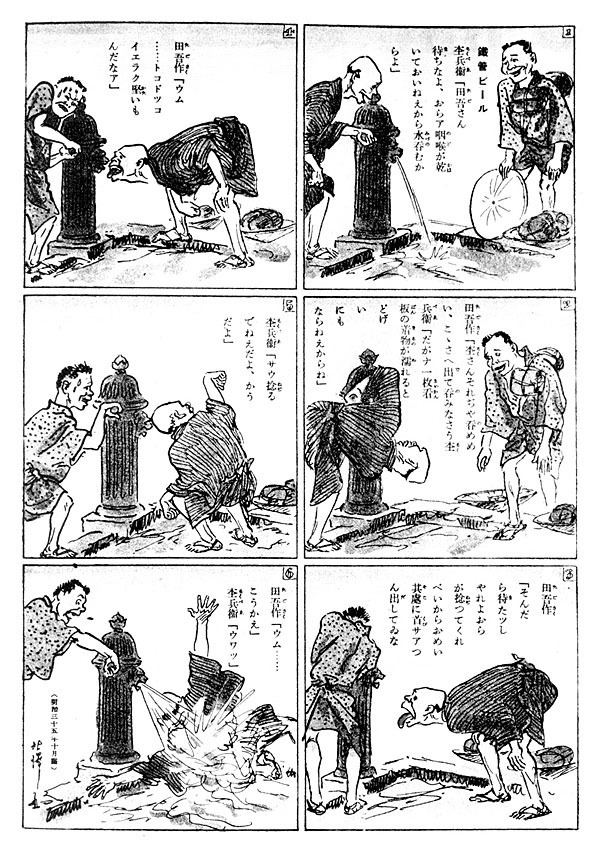 | ||
Saitama Municipal Cartoon Art Museum: Fujio Akatsuka Exhibition (Osomatsu kun, & co.) 漫画会館:赤塚不二夫展
Yasuji Kitazawa (北澤 保次, 20 July 1876 – 25 August 1955), better known by the pen name Rakuten Kitazawa (北澤 楽天, Kitazawa Rakuten), was a Japanese manga artist and nihonga artist. He drew many editorial cartoons and comic strips during the years from the late Meiji era through the early Showa era. He is considered by many historians to be the founding father of modern manga because his work was an inspiration to many younger manga artists and animators.
Contents
- Saitama Municipal Cartoon Art Museum Fujio Akatsuka Exhibition Osomatsu kun co
- Biography
- Influence
- Notable works
- References
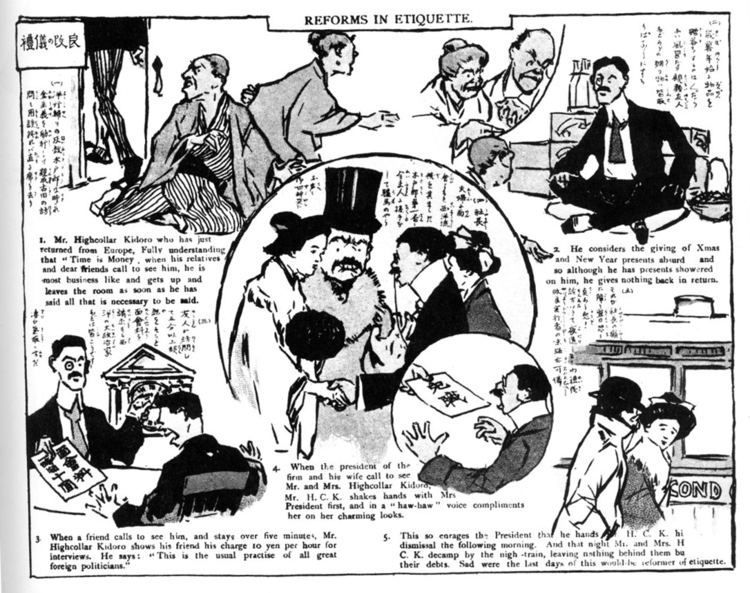
He was the first professional cartoonist in Japan, and the first to use the term "manga" in its modern sense.
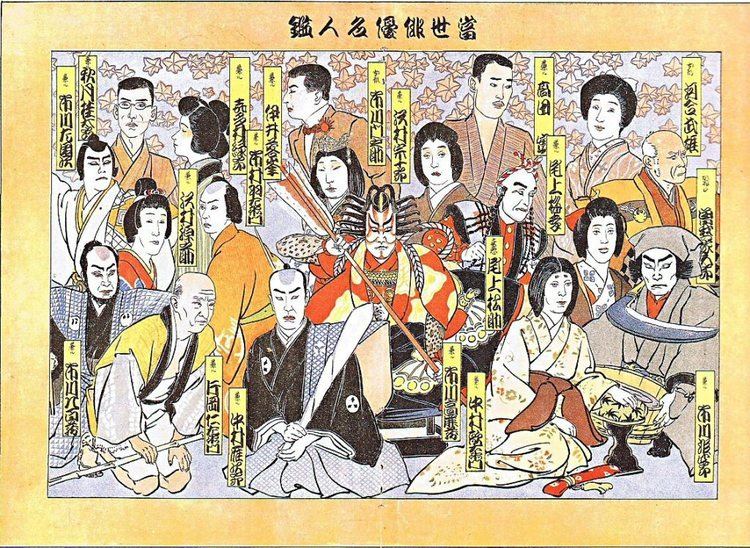
Biography
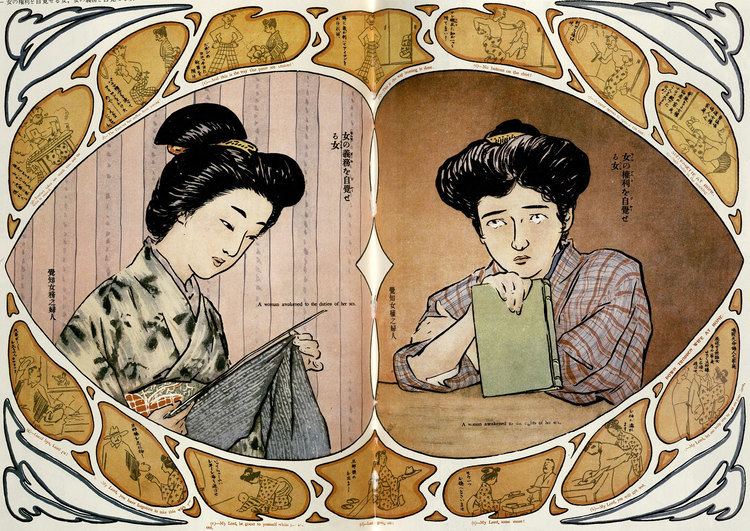
Rakuten was born in 1876 in the Kita Adachi district of Ōmiya in Saitama Prefecture. He studied western-style painting under Ōno Yukihiko and Nihonga under Inoue Shunzui. He joined the English-language magazine Box of Curios in 1895, and started drawing cartoons under Frank Arthur Nankivell, an Australian artist who later emigrated to America and became a popular cartoonist for Puck magazine.
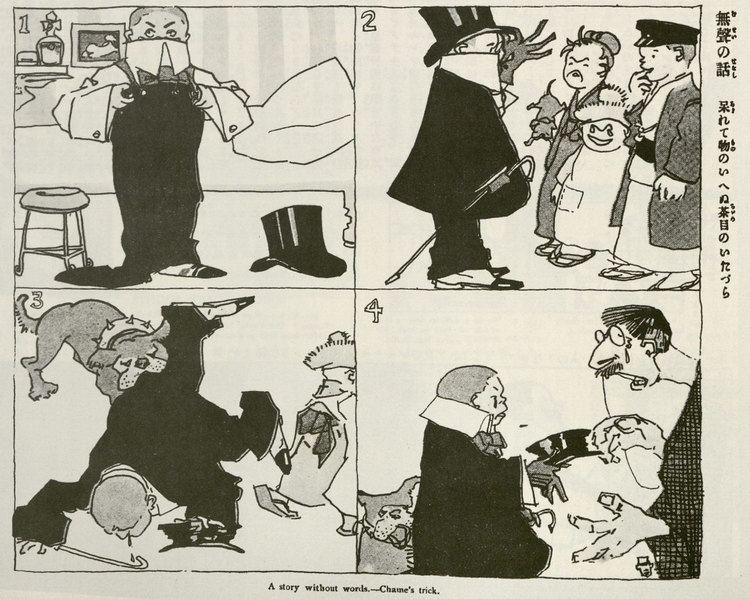
In 1899, Rakuten moved to Jiji Shimpo, a daily newspaper founded by Yukichi Fukuzawa. From January 1902, he contributed to Jiji Manga, a comics page that appeared in the Sunday edition. His comics for this page were inspired by American comic strips such as Katzenjammer Kids, Yellow Kid, and the work of Frederick Burr Opper.
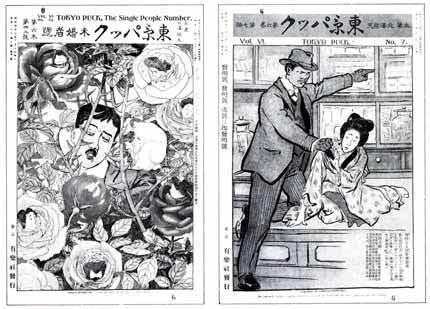
In 1905, Rakuten started a full-color satirical magazine called Tokyo Puck, named after the American magazine. It was translated into English and Chinese and sold in not only Japan but also in the Korean peninsula, Mainland China, and Taiwan. He worked for this magazine until 1915 (with the exception of a short period around 1912, during which he published a magazine of his own called Rakuten Puck), and then returned to Jiji Shimpo, where he remained until his retirement in 1932.
In 1929, Rakuten held a private exhibition in Paris on the recommendation of the French ambassador, and was awarded the Legion d'honneur. During World War II, he was the chairman of the Nihon Manga Hōkō Kai, a cartoonists society organized by the government to support the war effort.
Influence
Both before and after his retirement, Rakuten trained many young manga artists and animators, including Hekoten Shimokawa, creator of Japan's first cartoon animation. Along with Ippei Okamoto, he was one of the favorite cartoonists of the young Osamu Tezuka.
